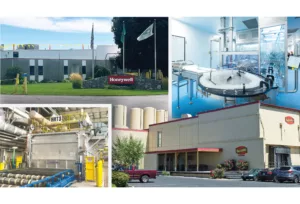System turns digital design into building components
Technology is expected to speed manufacturing while reducing costs
Like other professionals, architects have used computer-aided design (CAD) software in their work for decades. Typically, the resulting digital files are converted to hard-copy plans, which then are used to support traditional construction practices.
Researchers in the College of Architecture at the Georgia Institute of Technology now are automating some of the processes by which computer-based designs are turned into real-world entities. They're developing techniques that fabricate building elements directly from digital designs, allowing custom concrete components to be manufactured rapidly and at low cost.
"We're developing the research and the protocols to manufacture high-end customized architectural products economically, safely, and with environmental responsibility," says Tristan Al-Haddad, an assistant professor in the College of Architecture who is a leader in this effort. "We think this work offers opportunities for architectural creativity at a new level and with tremendously increased efficiency."
In one recent project, Al-Haddad and a College of Architecture team collaborated with Lafarge North America to fabricate an award-winning building-element concept called a "liquid wall." The Georgia Tech team employed digital techniques to help construct a prototype wall, using ultra high-performance concrete; the result was displayed by the New York chapter of the American Institute of Architects in an exhibition titled "Innovate:Integrate."
In another Lafarge-sponsored project, Al-Haddad and a College of Architecture team are developing a complete freestanding structure using ultra high-performance concrete elements fabricated directly from digital designs.
The liquid wall, originated by Peter Arbour, of Paris-based RFR Consulting Engineers, won the 2010 Open Call for Innovative Curtain-Wall Design competition conducted by the AIA. The concept advanced an approach to curtain walls, which are building coverings that keep out weather but are non-structural and lightweight.
RFR's plans called for the liquid wall to be constructed of stainless steel and Ductal, a light and strong ultra-high-performance concrete (UHPC) that is produced by Lafarge. Moreover, the new building enclosure was conceived as an entire system, including integrated louver systems, solar shading, integrated passive solar collectors, and other advanced features.
Georgia Tech became involved in the liquid wall project when RFR decided to build a full-scale prototype of the complex concept.
Supported by the College of Architecture's Digital Building and Digital Fabrication laboratories, the researchers refined the geometry of the original sketches for manufacturability and developed the techniques required for fabrication.
Then, working from their digital models and using a five-axis CNC router—a device capable of machining material directly from a digital design—the Georgia Tech team milled a full-scale model of the wall. The model was made from a lightweight polymer material, expanded polystyrene (EPS) closed-cell foam.
The digitally milled foam model created an exact replica—a positive—of the final wall. The lightweight positive then could be used to produce a negative capable of forming the actual prototype. In this case, the collaborators used the positive to produce a rubber mold—the negative—from which the final wall was cast.
The foam positive was shipped to Coreslab Structures Inc., a large corporation that specializes in industrial-scale casting. The Georgia Tech team then worked with Coreslab to identify the best techniques for creating the rubber mold and for pouring in Ductal to form the concrete wall.
A future project, expected to be about 20 by 20 feet square and 15 feet high, will be built using Ductal concrete, mostly or entirely. A central technical challenge will involve molding the many custom elements so that all edges fit together and form a structure that is stable, practical, and aesthetically pleasing.
"We understand the structural side of a project like this quite well—the difficulty comes in the actual manufacturing of the elements," Al-Haddad says. "We want to advance the use of digital parametric models with custom molding systems, and create a free-form manufacturing system that can produce many variations quickly and accurately."
Related Articles

_c.webp?t=1763626051)
_web.webp?t=1764835652)

